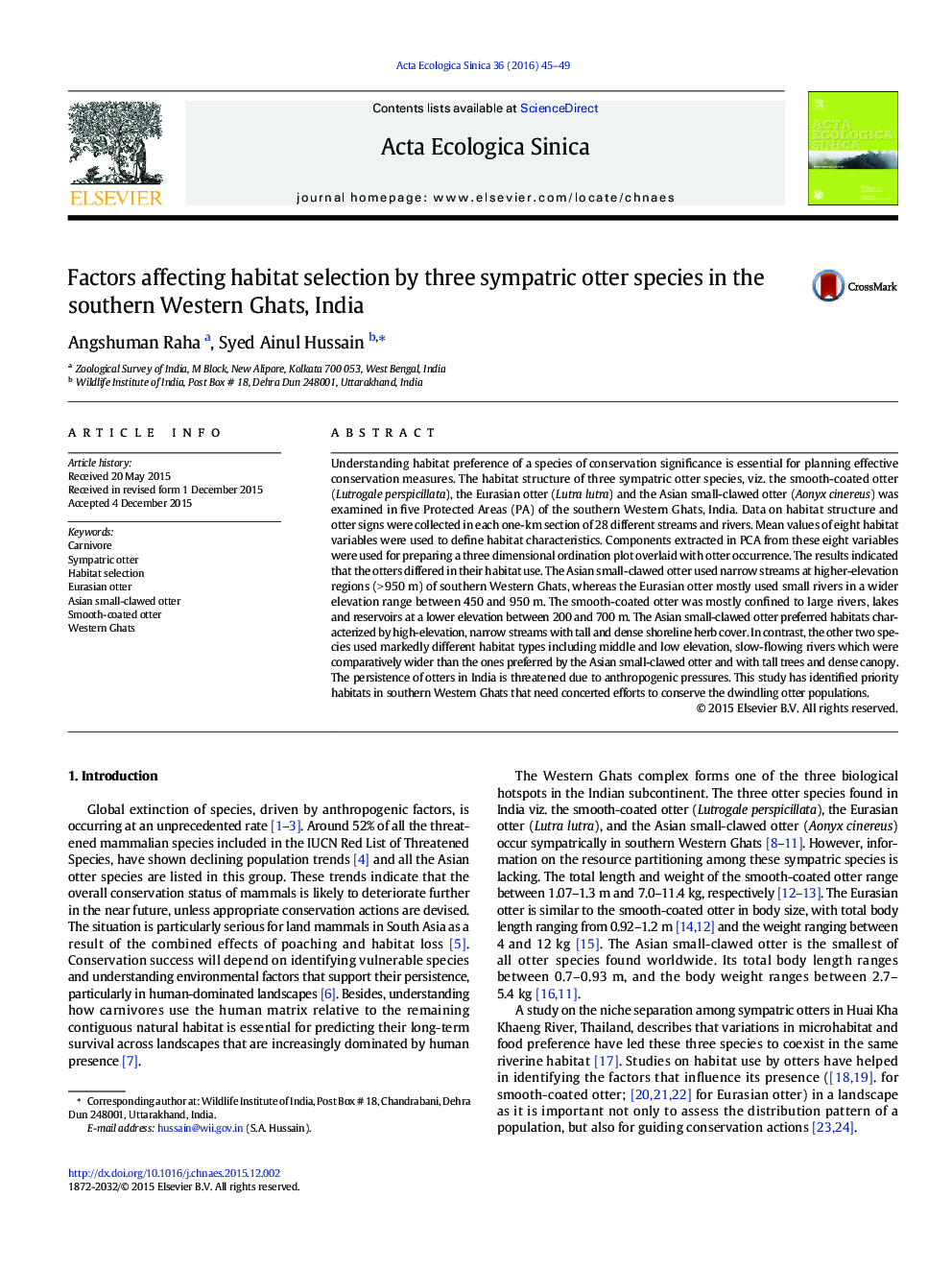| Article ID | Journal | Published Year | Pages | File Type |
|---|---|---|---|---|
| 4379764 | Acta Ecologica Sinica | 2016 | 5 Pages |
Understanding habitat preference of a species of conservation significance is essential for planning effective conservation measures. The habitat structure of three sympatric otter species, viz. the smooth-coated otter (Lutrogale perspicillata), the Eurasian otter (Lutra lutra) and the Asian small-clawed otter (Aonyx cinereus) was examined in five Protected Areas (PA) of the southern Western Ghats, India. Data on habitat structure and otter signs were collected in each one-km section of 28 different streams and rivers. Mean values of eight habitat variables were used to define habitat characteristics. Components extracted in PCA from these eight variables were used for preparing a three dimensional ordination plot overlaid with otter occurrence. The results indicated that the otters differed in their habitat use. The Asian small-clawed otter used narrow streams at higher-elevation regions (> 950 m) of southern Western Ghats, whereas the Eurasian otter mostly used small rivers in a wider elevation range between 450 and 950 m. The smooth-coated otter was mostly confined to large rivers, lakes and reservoirs at a lower elevation between 200 and 700 m. The Asian small-clawed otter preferred habitats characterized by high-elevation, narrow streams with tall and dense shoreline herb cover. In contrast, the other two species used markedly different habitat types including middle and low elevation, slow-flowing rivers which were comparatively wider than the ones preferred by the Asian small-clawed otter and with tall trees and dense canopy. The persistence of otters in India is threatened due to anthropogenic pressures. This study has identified priority habitats in southern Western Ghats that need concerted efforts to conserve the dwindling otter populations.
